Stepping into the bustling streets of Amsterdam, one can’t help but feel the weight of history. The Anne Frank and World War II Walking Tour promises an immersive journey through the city’s past, where the resilience of the human spirit shines brightly against the darkness of a bygone era. Led by knowledgeable local guides, visitors explore the profound story of Anne Frank, exploring the very places that bore witness to her harrowing experience. From the Jewish Quarter to the Resistance Museum, each stop on the tour unveils a new layer of this powerful narrative, leaving participants with a deeper understanding of the impact of the Nazi occupation on Amsterdam’s vibrant community.
Key Points
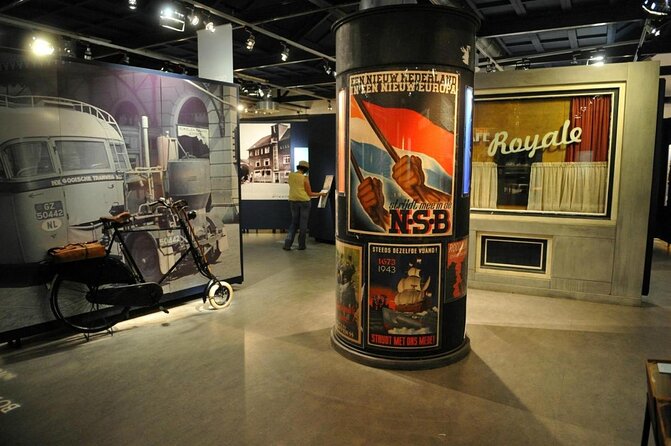
- Offers an immersive exploration of Anne Frank’s life and the impact of WWII on Amsterdam’s Jewish community through visits to key historical sites.
- Highlights the rich cultural heritage and resilience of Dutch Jewry, including the iconic 17th-century Portuguese Synagogue.
- Recounts the Frank family’s harrowing experience of living in concealment during the Nazi occupation and Anne’s remarkable spirit.
- Visits the Auschwitz Monument, a powerful memorial to the victims of the Holocaust, and the Resistance Museum showcasing acts of defiance.
- Guided by knowledgeable local experts, providing a deeper understanding of one of the most impactful stories to emerge from the Holocaust.
Tour Overview
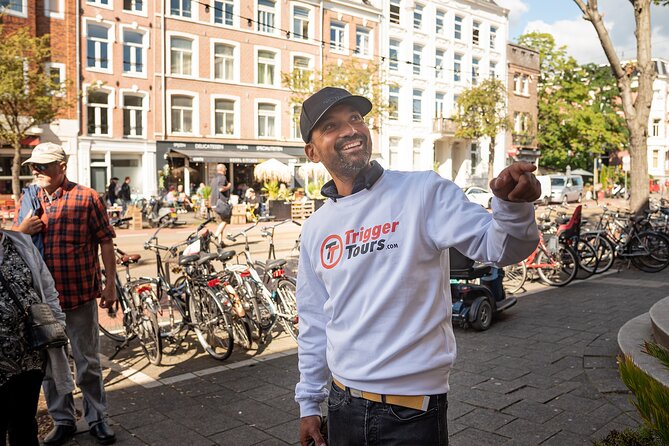
This private walking tour of Amsterdam’s Jewish Quarter offers travelers an immersive glimpse into the life of Anne Frank and the profound impact of World War II on the city’s Jewish community.
Led by a knowledgeable local guide, the tour takes visitors to key sights connected to Anne Frank’s story, including synagogues, the Auschwitz Monument, and the Resistance Museum.
Along the way, you’ll learn about the Frank family and their life in hiding, as well as the broader history of Amsterdam’s vibrant Jewish population.
With ample time for questions, this intimate tour provides a deeper understanding of one of the most powerful stories to emerge from the Holocaust.
If you're enjoying exploring Amsterdam on foot, you'll love these other walking tours we recommend
Exploring the Jewish Quarter
The tour begins in the heart of Amsterdam’s vibrant Jewish Quarter, a neighborhood steeped in a rich tapestry of history, resilience, and cultural heritage. As the group sets out, the guide expertly weaves together the stories of the past, bringing to life the triumphs and tragedies that have shaped this community. Along the way, they’ll visit iconic landmarks like the Jewish Historical Museum, the Portuguese Synagogue, and the Auschwitz Monument, each offering a unique window into the Jewish experience in Amsterdam. The guide encourages questions and dialogue, fostering a deeper understanding of the past and its lasting impact.
| Landmark | Significance | Highlights |
|---|---|---|
| Jewish Historical Museum | Showcases the rich history and culture of Dutch Jewry | Impressive collection of religious artifacts, artwork, and interactive exhibits |
| Portuguese Synagogue | One of the best-preserved 17th-century synagogues in Europe | Stunning Baroque architecture and intricate interior design |
| Auschwitz Monument | Poignant memorial to the victims of the Holocaust | Powerful symbolic representation of the atrocities committed during WWII |
Anne Frank’s Life in Hiding
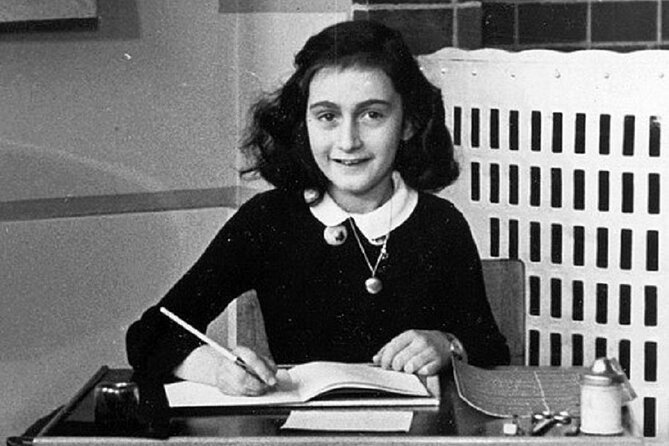
As the tour progresses, the guide leads the group to the former hiding place of the Frank family, vividly recounting Anne Frank’s harrowing experience of living in concealment during the Nazi occupation. Stepping inside the narrow annex, visitors can almost palpate the fear and uncertainty that permeated the lives of those who sought refuge there, while the guide’s narration poignantly brings to life the resilience and humanity that shone through even in the darkest of times.
The tour highlights three key aspects of Anne’s life in hiding:
- The meticulous planning required to evade detection and maintain secrecy for over two years.
- The emotional turmoil of being confined to a cramped space, separated from the outside world.
- Anne’s remarkable spirit and optimism, as reflected in her now-famous diary.
Significant Synagogues
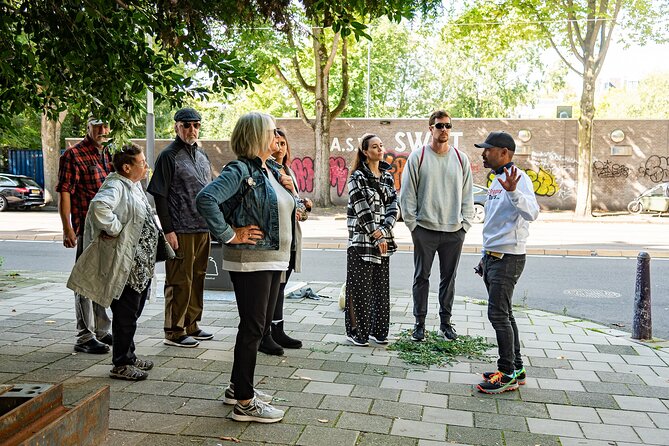
Amsterdam’s storied synagogues stand as living testaments to the city’s rich Jewish heritage, each possessing its own remarkable history and architectural grandeur that the tour guide expertly brings to life.
Visitors will marvel at the Portuguese Synagogue, an ornate 17th-century structure adorned with stunning brass chandeliers and grand wooden benches. The guide recounts how this sanctuary narrowly escaped destruction during the war, sheltering Jews who braved the risks to worship in safety.
At the Esnoga Synagogue, the guide points out the intricate Hebrew inscriptions and elaborate painted ceilings, transporting guests back to Amsterdam’s golden age of Jewish culture and community.
These sacred spaces offer poignant windows into the past, their resilience inspiring all who walk through their doors.
Auschwitz Monument
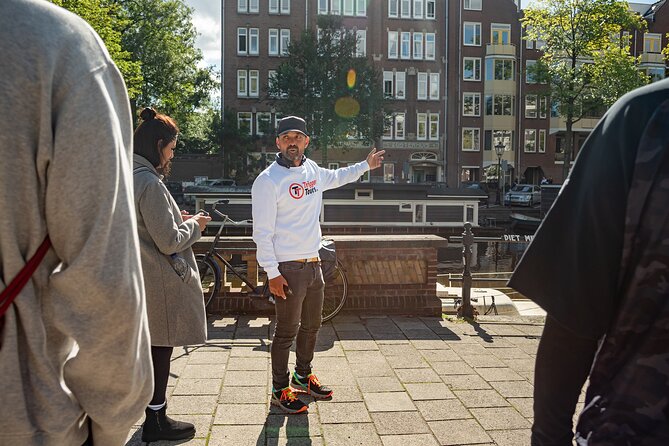
Amidst the somber backdrop of Amsterdam’s Jewish Quarter, the Auschwitz Monument stands as a poignant tribute to the victims of one of history’s darkest chapters.
Crafted from stark concrete, its angular, geometric design evokes the harsh realities of the Nazi concentration camp it commemorates, a powerful reminder of the horrors endured by the Jewish people during the Holocaust.
Visitors to the monument are confronted with the immense scale of the tragedy, its imposing presence a solemn call to remember and reflect.
Three key elements of the monument’s design include:
- The stark, angular forms representing the inhumane conditions of Auschwitz.
- The use of concrete, a material both durable and unforgiving.
- The monument’s placement within the historic Jewish Quarter, a constant reminder of the devastation.
- Ticket to The Ultimate 5D Flight Experience at THIS IS HOLLAND
- Eating Amsterdam: Jordaan Small-Group Food Tour
- Zaanse Schans Windmills, Clogs and Dutch Cheese Small-Group Tour From Amsterdam
- Van Gogh Museum Exclusive Guided Tour With Reserved Entry
- Anne Frank Walking Tour Amsterdam Including Jewish Cultural Quarter
- Amsterdam Highlights Small-Group Walking Tour
Resistance Museum
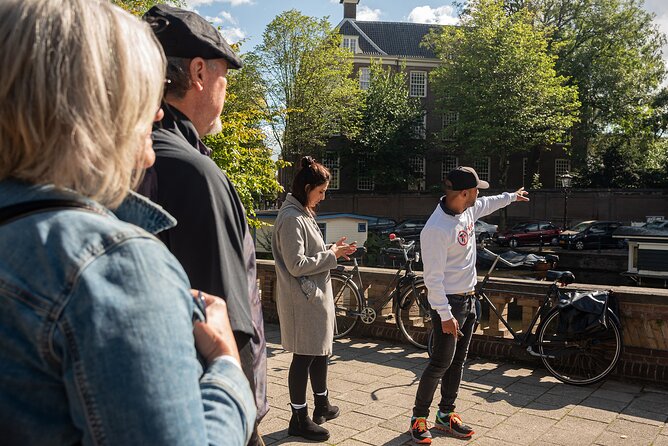
The Resistance Museum stands as a powerful testament to the indomitable spirit of the Dutch people during the dark years of World War II, offering visitors a profound glimpse into the courage and determination that fueled their fight against Nazi occupation. The museum’s exhibits chronicle the harrowing stories of resistance fighters, from the daring sabotage missions of the underground networks to the heartbreaking sacrifices of those who gave their lives in the name of freedom. Visitors can explore a treasure trove of artifacts, including secret radio transmitters, forged identity documents, and the personal effects of brave individuals who risked everything to oppose the tyranny of the Nazi regime.
| Exhibit | Highlights | Significance |
|---|---|---|
| Resistance Fighters | Profiles of courageous individuals | Inspiring acts of defiance |
| Underground Networks | Covert operations and sabotage | Disrupting the Nazi occupation |
| Wartime Artifacts | Hidden radios, forged documents | Ingenuity and resourcefulness |
Logistics and Inclusions
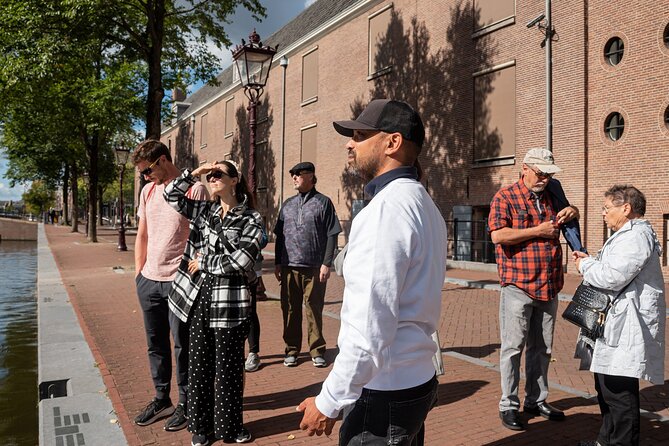
This walking tour starts at the Hermitage pier next to the H’ART Museum entrance on the Amstel River, where travelers meet their private guide.
The experience typically lasts around 2-3 hours, with group sizes limited to no more than 15 participants.
While the tour includes an expert local guide, it doesn’t cover entrance fees to the Anne Frank House or any food and drinks along the way.
The logistics of this tour are:
- Meeting point: Hermitage pier, next to H’ART Museum entrance on Amstel River
- Duration: Approximately 2-3 hours
- Group size: Limited to 15 travelers
This setup allows for an intimate, guided exploration of Amsterdam’s Jewish Quarter and World War II history, with ample time for questions and discussions.
Cancellation and Reviews
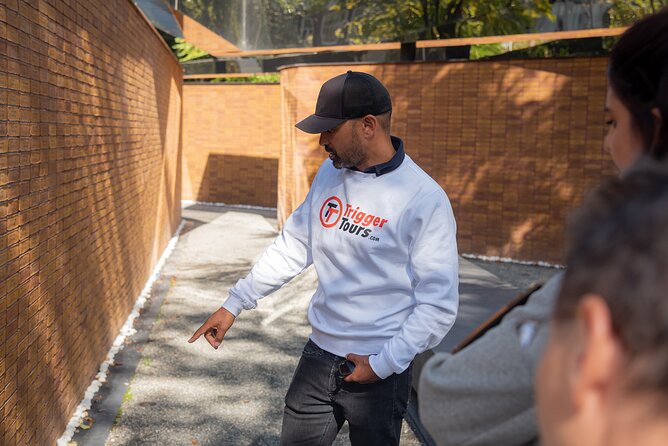
Travelers can cancel their booking up to 24 hours in advance for a full refund, but no refunds are provided for cancellations made less than a day before the experience. This flexible policy allows travelers to easily adjust their plans if needed.
The tour has received an impressive 46 reviews and earned a Badge of Excellence, suggesting it’s a well-run and worthwhile activity. Reviewers praise the knowledgeable local guide, who provides a moving and informative look at Amsterdam’s Jewish history and the tragic story of Anne Frank.
With a small group size limited to 15 travelers, this immersive walking tour offers an intimate and personalized exploration of this dark yet powerful chapter in history.
Frequently Asked Questions
Can I Bring My Own Food and Drinks on the Tour?
No, you can’t bring your own food and drinks on the tour. The tour package doesn’t include them, and the guide won’t allow it. However, you’ll have plenty of opportunities to grab a snack or beverage during the scheduled breaks.
Is the Tour Suitable for Young Children?
The tour may not be suitable for young children, as the subject matter can be heavy and somber. The guide covers sensitive topics related to the Holocaust, which may not be appropriate for young audiences. Parents should use discretion.
Do I Need to Make a Reservation in Advance?
Yes, it’s generally best to make a reservation in advance for this tour. Tour group sizes are limited, so booking ahead ensures you can secure your spot and avoid disappointment. The tour is quite popular, so advance planning is recommended.
What Should I Wear for the Walking Tour?
For a walking tour, comfortable walking shoes and weather-appropriate clothing are recommended. Dress in layers as the temperature can fluctuate. Bring sun protection if it’s sunny or an umbrella if rain is in the forecast.
Are There Any Discounts Available for Students or Seniors?
There may be student and senior discounts available for this walking tour, though the details are not specified in the provided information. It’s best to check with the tour operator directly to inquire about any potential discounted pricing.
Recap
The Anne Frank and World War II Walking Tour in Amsterdam offers a profound and immersive experience, guiding visitors through the harrowing history of the city’s Jewish community during the Nazi occupation.
It’s a poignant journey that showcases the resilience of the human spirit, leaving a lasting impact on all who embark on this powerful and educational exploration of a dark yet important chapter in history.
More Walking Tours in Amsterdam
More Tours in Amsterdam
- Private Tour of Giethoorn (Dutch Venice) & Batavia Land
- Private Rijksmuseum Tour
- Full Day Private Dutch Golden Age Cities Tour
- Amsterdam: small group tour: History, humor & hidden gems
- Amsterdam: Red light tour with bar visit + free drink and stop at a coffee shop
- Private Kinderdijk UNESCO Site and South Holland Tour
More Tour Reviews in Amsterdam
- Van Gogh and Rijksmusuem Tour: Small Group Tour with Entry
- Amsterdam: Private Photo Session with 10 Edited Photos
- Amsterdam: Self-guided Red Light District Pub Crawl Mystery
- From Amsterdam: Rotterdam, Delft & The Hague Guided Day Tour
- Zaanse Schans: Half-Day Private Guided Tour
- Zaanse Schans: E-bike day trip: Windmills, Cheese and Nature
Not for you? Here's more things to do in Amsterdam we have recnetly reviewed
- New Optimist: Atelier Visit & Shopping tour
- From Amsterdam: Tulip Fields of Holland Tour
- Zaanse Schans Windmills, Volendam, and Marken Day Trip
- Amsterdam: to the Dutch Countryside – Exclusive Private Tour
- Amsterdam: SAIL 2025 with the Bulldog Boat Smoke cruise
- Your Own Amsterdam. The Old Side
- REDKULT: Red Light District & Historical City Center
- Photoshoot in or around Amsterdam
- Amsterdam: Combo Rijksmuseum & Hop-On Hop-Off Bus
- From Amsterdam: Brugge Day Trip and Walking Tour
- Private Tour Veluwe National Park and Kröller Müller Museum
- Personalized Netherlands Full-Day Guided Tour from the Hotel
